Reward-based learning: benefits, applications, and strategies in 2023

In today’s world where attention spans are shorter, motivating learners can feel like an uphill battle. You’ll have to consider different engagement strategies and make sure they work. One of these strategies is reward-based learning, which is all about using the power of rewards to shape how people think and act.
In this article, we’ll guide you through the process of reward learning, exploring its benefits, drawbacks, and practical tips for successful implementation.
What is reward-based learning?
Reward-based learning is built on the idea of “operant conditioning” which suggests that our brains are wired to seek pleasure and avoid pain. It’s a process where we learn and grow by receiving rewards that reinforce positive behavior and motivate us to improve.
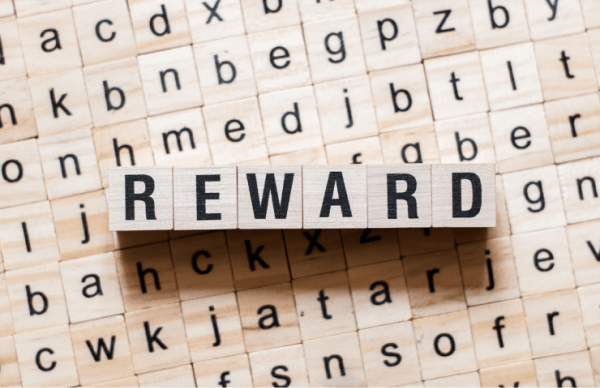
Here’s how it works.
When a person engages in a behavior and receives a reward for it, their brain makes a connection between the behavior and the positive outcome. This connection strengthens the neural pathways associated with that behavior, making them more likely to repeat it in the future.
It’s like their brain saying, “Hey, that worked out well! Let’s do it again!”
On the other hand, if a person’s behavior leads to a negative outcome or no reward, their brain refuses to reinforce that behavior. It learns that the particular action didn’t bring the desired result, so it’s less likely to be repeated.
Examples of reward learning
There are many areas where you can apply a reward-based approach to bring about positive changes. Here are a few examples of reward learning in different areas:
- Professional growth - offering skill-based training, performance-based promotions and incentives, special assignments, additional paid leaves, professional certifications, recognition programs, “employee of the month”
- Education - academic achievement awards, scholarships, class participation incentives, extracurricular activity recognition, leadership opportunities, academic support programs
- Parenting and behavior management - privilege-based rewards, verbal praise, quality time, sticker charts, activity rewards, special outings, responsibility-based rewards
- Personal goals and self-improvement - self-reflection and self-praise, consistency-based rewards, self-care rewards, time for passion projects, social rewards, personal milestone markers
- Therapy and rehabilitation - positive reinforcement, goal-based rewards, milestone celebrations, adaptive outings, therapeutic recreation activities, collaborative goal-setting
What are the benefits of reward learning?
Let’s take a closer look at how a reward-based approach can benefit your learning initiatives.

1. You can increase learner motivation and engagement
Incentives can make learners feel like they’re making progress and achieving goals, which boosts their motivation to learn and perform better. Plus, the anticipation of receiving rewards increases learner engagement, which keeps them actively involved and focused on the task at hand.
2. Learners absorb knowledge and skills more quickly
When your learners receive rewards for their efforts, they become more receptive to learning. The connection between their behavior and the reward they get from it makes it easier for them to accept new knowledge and skills.
3. It promotes positive reinforcement and behavior improvement
Rewards can encourage learners to continue practicing desired behaviors. Through repetition, you can shape and modify their behaviors and encourage positive changes in their actions and habits.
4. Learners experience improved retention of knowledge
The brain tends to remember experiences linked to rewards. When your learners associate learning or a specific behavior with a good outcome, it enhances their memory retention. This leads to better recall and application of what they’ve learned.
5. You can enhance your learners’ self-confidence
This positive reinforcement helps your learners believe in themselves, so they feel confident and encouraged to take on more challenging tasks.
6. It creates an enjoyable learning experience
A good reward technique can add fun and enjoyable elements to the learning process. Your learners will think of learning as a positive thing, which can foster their commitment to gaining new knowledge and skills.
What are some disadvantages of reward learning?
While there are many advantages to a reward based learning system, there are also some things you should be mindful of. Keep in mind that depending too much on rewards can cause:

- lost inner motivation and passion for the task itself,
- oversight of long-term goals,
- unrealistic expectations,
- potential decrease in personal satisfaction,
- and difficulty adapting to situations without rewards.
It’s ultimately up to you to strategically use rewards in a way that you’ll be able to achieve your desired outcomes.
6 Useful tips and strategies for implementing reward learning
Here are six practical tips and strategies that can help you make the most of this approach:
1. Set clear and achievable goals
It’s never a good idea to rush into a project without careful planning. Before you proceed with your reward based learning initiative, start by defining your goals. Make sure these goals follow the SMART learning objectives so they’re more effective:

- Specific - clearly define what you want to achieve
- Measurable - allow progress to be quantifiable or measured objectively
- Attainable - take into account your available resources and capabilities
- Relevant - make sure it has direct relevance and importance to your learner
- Time-bound - set within a specific timeframe
These will give you a clear vision of what you want to accomplish, so it becomes easier to track progress and determine when rewards are deserved.
2. Choose rewards that matter
Whether you’re teaching your students or training your employees, you shouldn’t approach your plans with a “one-size-fits-all” mentality. It’s outdated and, for the most part, ineffective. Instead, select rewards that actually matter to the individuals or group you’re working with.

Take the time to get to know your learners and think about their interests, preferences, and motivations. It could be something as simple as a small treat, a special privilege, or even heartfelt praise and recognition. The important thing is to make the rewards meaningful in a way that appeals to your recipients individually.
3. Create a reward system
Develop a structured system for earning rewards. Clearly define the criteria or milestones that your learners need to meet so they can receive a reward. That way, you can establish a sense of fairness and transparency, and they’re well-assured that whatever reward they earn is a genuine result of their own effort and progress.

4. Offer timely feedback
Prompt feedback is essential to support the connection between behavior and reward. When you see that your learners are showing the desired behavior, offer them immediate feedback, praise, or encouragement. This will help them understand why they’re being rewarded, and then they’ll be more likely to reinforce positive behavior.

5. Gradually reduce rewards
When you’ve noticed that your learners’ behaviors have become more consistent or that their skills have improved, slowly decrease the frequency or magnitude of rewards. The idea is to transition them from relying solely on external rewards to finding internal satisfaction and enjoyment in the behavior itself.

Also, consider the bigger picture. Doing this lets you give them the opportunity to develop their intrinsic motivation, which is crucial for their personal growth and happiness in the long run.
6. Celebrate milestones and achievements
Besides individual rewards, it’s also important to celebrate significant milestones and achievements as a group. Take the time to acknowledge and recognize collective progress. You can do this through group celebrations, special events, or even a simple round of applause.

Celebrating milestones not only props up positive behaviors but also creates a sense of camaraderie and shared success. Remember, showing support is one of the most important ways you can foster a healthy environment for everyone.
Implement effective reward-based learning with EdApp
Rewarding your learners shouldn’t be such a difficult task. There are plenty of LMS tools online that can help you implement reward based learning effectively and efficiently. EdApp is among the best tools for this.
With EdApp, you’ll get a handful of reward-based features like points, leaderboards, badges, and more—all conveniently wrapped in one smart training platform. It has a user-friendly interface that’ll make your training and teaching processes smooth and hassle-free.
Here’s how you can take advantage of EdApp as a platform for employee reward and recognition:
Start by adding games to your lessons, which will serve as the foundation for your reward system. You can choose from EdApp’s set of interactive gamification templates to spice up your lessons and make them more engaging.
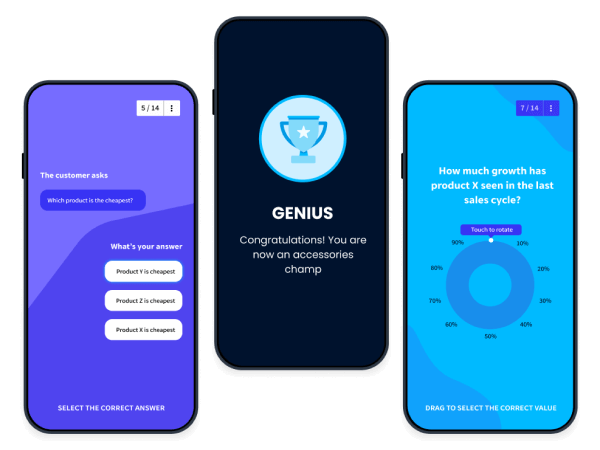
Templates include letter jumble, true or false, elevator game, memory tiles, image-word match, and more. You can apply weighted points or “stars” for each game, which they’ll receive depending on their answers.
With EdApp’s achievements tool, you can praise and reward your learners’ good performance and let them know they’ve done well. You can create badges and banners and customize them to fit your unique branding.
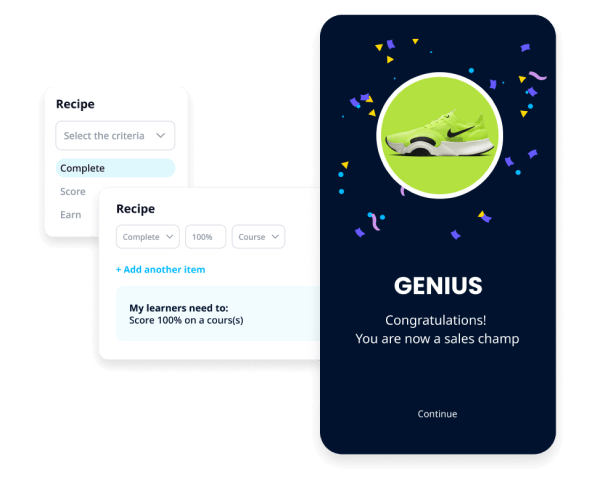
Motivate your learners with friendly competition using the platform’s leaderboards feature. This allows you to create individual or group leaderboards based on their team, location, and activity. Knowing their ranks lets you determine who your top learners are, which makes it easier to hand out rewards to those who deserve them.
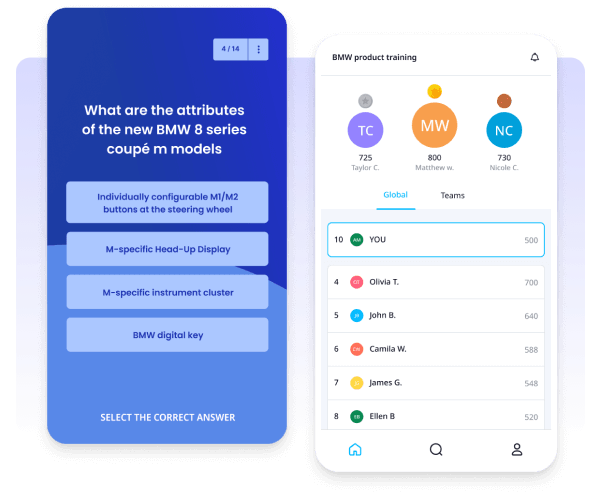
Your learners will have the chance to swap the “stars” or virtual currency that they’ve collected from game results and completion of lessons for tangible rewards like Amazon gift cards, iTunes vouchers, and other discount deals.
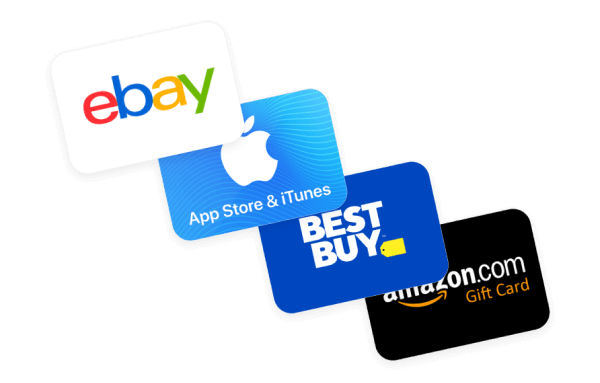
Once your learners have finished a course, you’ll be able to distribute certificates of completion as a way to recognize their hard work. This will give them a sense of accomplishment and the drive to learn more.
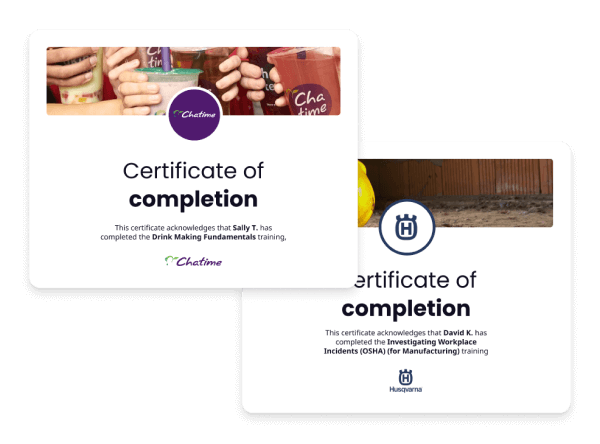
Even better? You’ll have a lot more features at your disposal for absolutely no cost.
Sign up with EdApp today and get your reward-based learning plan running for free.
Author
Ella Mar
Ella is a content writer for EdApp, an award-winning e-learning management system designed to help companies deliver high-quality workplace training. In her free time, she enjoys painting, reading, or playing with her cat.
